Indoor solar energy harvesting: the december numbers
By limpkin on Tuesday, January 17 2012, 10:14 - My Projects - Permalink
After a rather cloudy month, I finally extracted the logged data from my 8 platforms. So let's see what we got here...
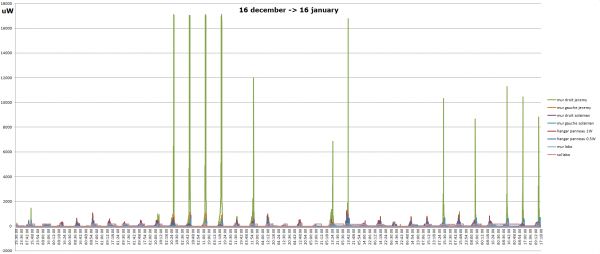
Firstly, to understand this article, you'll need to have a look at my post about the logging platform I'm using here.
Let me describe the rooms in which I put these platforms:
- 2 platforms in a room with artificial light only. One attached to the wall, the other on a table:
- 2 platforms attached to a wall facing a huge open space, where only reflections from outdoor light can penetrate (as well as indoor light of course) :
- 2x2 platforms in rooms having their windows facing west. The platforms are either facing north or south and are at different distances from the windows:
So between the 16th of december and 16th of january, here is the average extracted energy :
First of all, you need to keep in mind that this is more or less the worst month for energy harvesting, as it is winter and mostly cloudy.
With an average of 151uW, it is the platform facing south and placed very close to the window which wins the contest. I'll say there's no big suprise here, as I'm living in the north hemisphere.
However, the other platform also facing south placed in the other room nearly got the worst extracted energy (7.4uW). Why? I guess because it was placed a bit too high and too far from the window (nearly 2.5m away).
We also notice that the 1W solar panel platform nearly extracts twice the energy that the 0.5W solar panel platform does (50uW vs 28uW). The difference is explained by their different efficencies: 15.5% vs 17%.
And finally, don't even think about extracting solar energy when your solar panel is attached to a wall in a room where no light from the outside can penetrate. I basically extracted nothing.
The platform facing up in the "closed room" extracted an average of 54.4uW, and you'll see further down this article the frequency at which the (quite bright) lights where turned on.
So what can we get from these results?
Well, you'll still need to take care about where to place your solar panels in your home, especially if you want to extract more than 5uW.
However I think it is a fair assumption to expect more than 20uW if you place your panel close to a window with the curtains partially shut (see pictures).
But then, you can expect even more if you design your embedded system with a large battery in order to get more energy in the better months of the year (numbers coming soon ;-) ).
And finally, if you know that at some point in the day the sun will directly face your solar panel, then you can be sure you'll have more than 150uW in average.

Here are the instantaneous extracted energies through this month period.
My logging platform actually saturated for the green data (I can't log more than 17mW). Only for a short time though.
You can also see that the time in which you can actually extract energy during the day is quite short. That's why you got to make it count....
Finally, here is the comparison between using the BQ25504 to charge your battery versus having your solar panel directly power a fixed load:

Quite impressive right? This BQ chip is really a wonder...
In case you want all the data, here is the excel file: mesures.xlsx
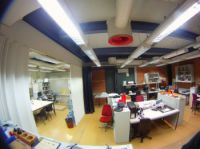
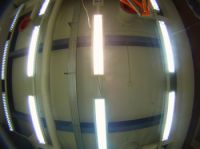
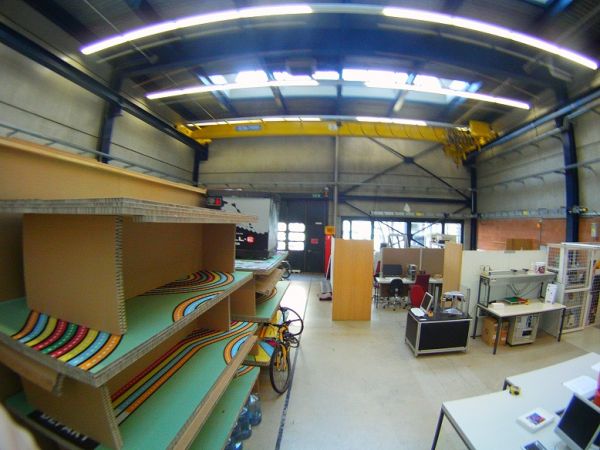
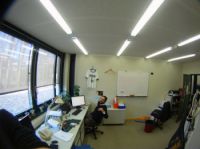
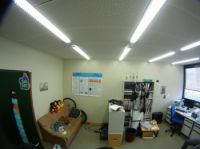
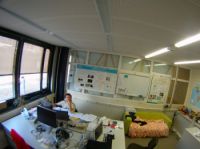
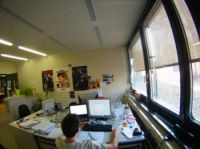


Comments
hackaday brought me here !
cool l'article, a+
xav
Hi,
This is excellent work and very thorough too. Great job...Really looking forward to your upcoming measurements and results. I have a couple of questions / suggestions:
1) When you directly connect the load to the panel, have you tried putting in a load resistor that would be close to providing the optimum impedance such that the panel sits at the maximum power point.
2) What are the other light sources inside the room? Does the panel get some of its power from these sources?
3) What was the configuration of the solar cells? How many in series/parallel? The BQ chip might be able to provide better efficiencies at higher input voltages. So, more cells in series than in parallel might give you more output power
@TB12 : Hi,
These are excellent questions.
1) I did not, as I chose my load to have the maximum power resolution for the 0-18.5mW range. But that could definitely be a quickly made improvement.
2) There is indoor lighting coming from the ceiling, but it can be neglected. As I mentioned on my article, the platform is not extracting any energy when it is placed on a wall in a room where no outside light can penetrate.
3) Only one solar cell (this one) for each of the two parts of the schematics (the bq part and the fixed load part). The BQ25504 will definitely provide a better efficiency at higher input voltages, but will not handle high voltages when direct light hits the solar panel. You're better off using a larger one cell solar panel!
Cheers
Great job, very useful for people trying to harvest energy!
I have some questions :
- What was the voltage your solar cell was providing when it was put in the sol lab setting?
- What could be done to increase the energy harvested in the sol lab, maybe if you tried putting the solar cell very close to the light source? could this double the output current?
Thanks
@john : Hey! Sorry for the delay of my answer...
- I actually haven't measured the voltage at the cell, as the chip will adapt it in order to extract the more energy possible
- You'd definitely increase the current by putting the solar panel close to the light source, facing south
@Nico Encarnacion : Nice! Thanks :)